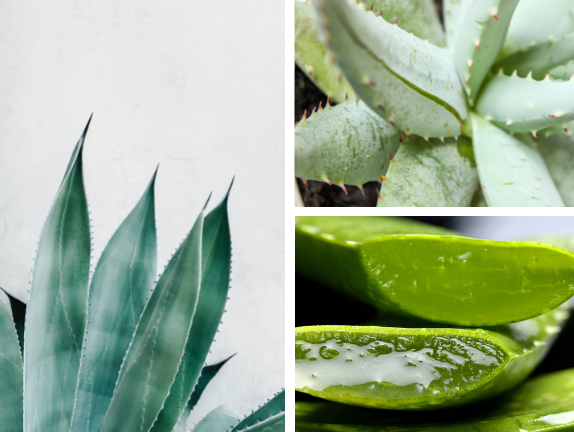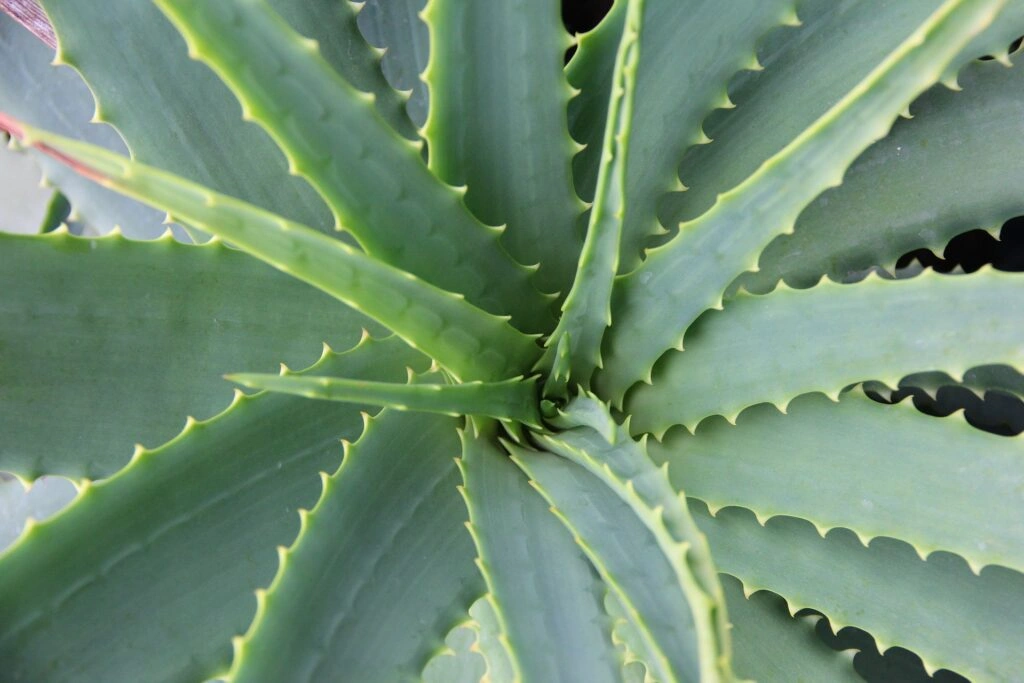Aloe barbadensis
Latin Name: Aloe barbadensis
Herb Class/Action: Alterative, Healthy Inflammatory Response Support, Digestive Bitter, Tonic, Cholagogue
Parts Used: Translucent leaf gel
Flavors: Bitter, sweet, astringent, salty
Energetics: Cooling, moistening, tonifying
Traditional Benefits: Skin support, support the skin’s natural healing process, digestive support, musculoskeletal support, respiratory support, immune support, liver support
A traditional skin-and-gut rejuvenative herb that promotes a healthy inflammatory response both internally and externally, along with healthy digestion and elimination.*
Aloe vera is a tropical plant with the resiliency and self-sufficiency of a desert cactus.
Though it originated in wet, humid areas, it’s capable of surviving in environments with little water, like the desert—which makes it an easy, low-maintenance houseplant. The translucent gel from inside its leaves is used both topically and internally for various ailments and to support general wellness needs.
With uses dating back to 4000 B.C. in Africa, the aloe vera leaf has long been a staple for healers and herbalists. It’s been called the “silent healer” by Hindus, the “plant of immortality” by ancient Egyptians, and the “lifesaver” by your friend who forgot to reapply sunscreen at the beach. While there are over 20 types of aloe vera plants, the one most commonly used in herbal remedies is Aloe barbadensis.
To all my fellow pitta people—this herb’s for you. As a cooling, moistening, and tonifying herb, aloe vera helps balance and calm that fire within you that can sometimes manifest as slow-moving, dry bowel movements (think heat of the desert = drought) or hot, angry skin complaints. In more tangible terms, aloe vera is known to help balance stomach acid, support regulation of periods (especially pitta excess problems the irritable “heat” of PMS), and support a healthy inflammatory response. No surprises here, coming from the herb commonly associated with calming even the most irritated, sun-drenched skin!
What else can it do? Similar to how it soothes sunburns and speeds up the rejuvenation and healing process, when applied topically, aloe vera may help with skin complaints on the face or body. While aloe vera gel can be applied directly to the skin, you can find it in more comprehensive skin care formulas, like a lotion or oil. And let’s not forget about scalp health (it’s skin, too!): aloe vera gel can help soothe an irritated scalp and promote healthy hair.
When ingested, aloe vera juice or water (both are highly refreshing to drink!) may help support a healthy inflammatory response within the body as well. Internally, aloe vera’s most notable internal function is supporting the digestive system: stimulating the secretion of digestive enzymes, balancing the gut flora, aiding with healthy bowel movements especially when dry and dehydrated or occasionally constipated, etc.
What’s fascinating about aloe vera is that, in a lot of cases, we can’t pinpoint a single active ingredient as the source of its healing power—it’s truly a powerful combination of all the vitamins, enzymes, minerals, sugars, amino acids, etc. within this plant that make it effective.*

